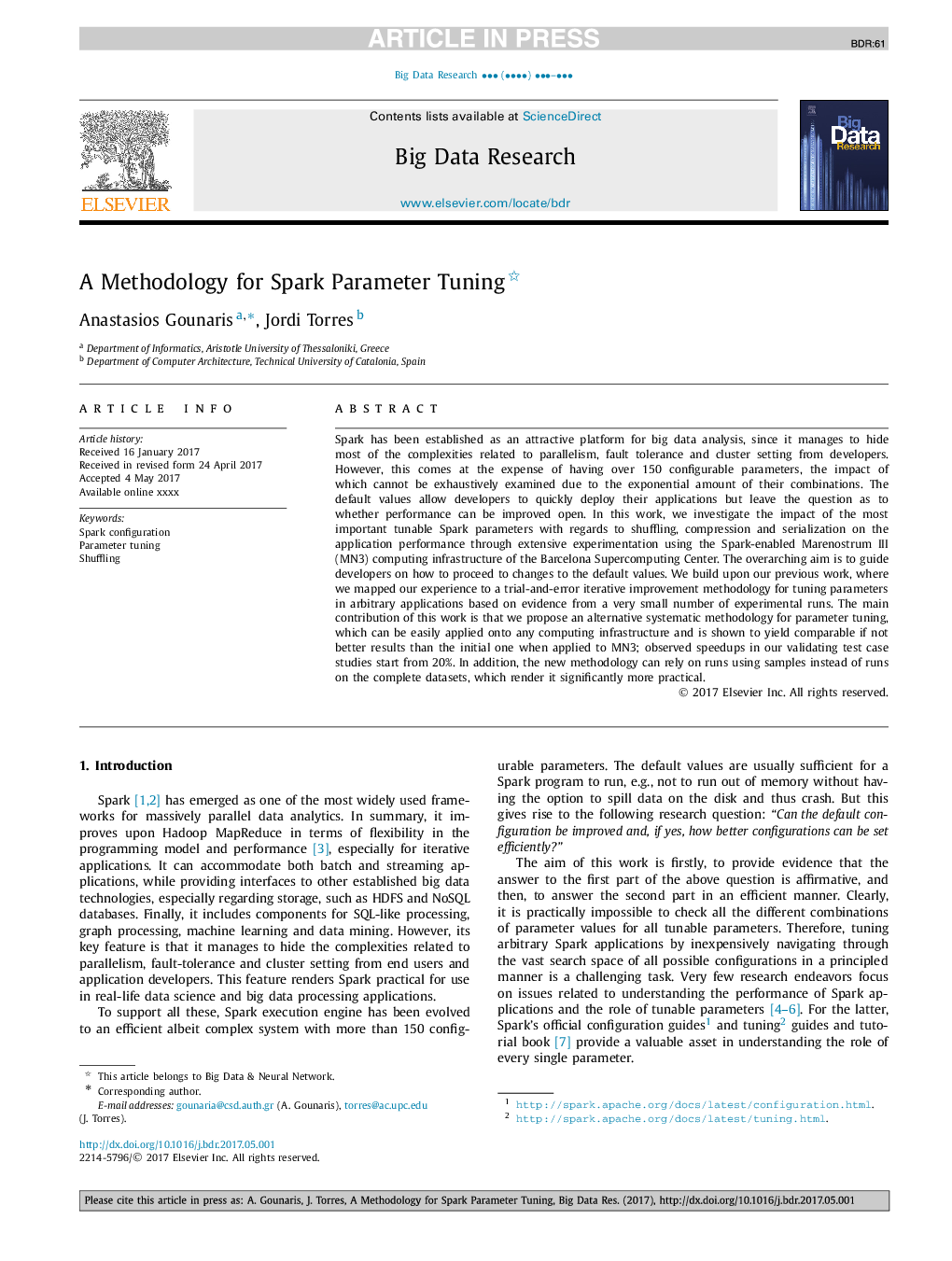ترجمه فارسی عنوان مقاله
یک روش برای تنظیم پارامتر جرقه
عنوان انگلیسی
A Methodology for Spark Parameter Tuning
| کد مقاله | سال انتشار | تعداد صفحات مقاله انگلیسی |
|---|---|---|
| 108610 | 2018 | 11 صفحه PDF |
منبع

Publisher : Elsevier - Science Direct (الزویر - ساینس دایرکت)
Journal : Big Data Research, Volume 11, March 2018, Pages 22-32
ترجمه کلمات کلیدی
پیکربندی جرقه تنظیم پارامتر، زدن
کلمات کلیدی انگلیسی
Spark configuration; Parameter tuning; Shuffling;

